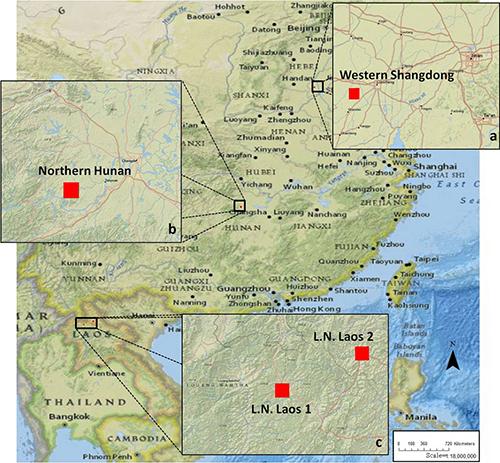Not all land uses are created equal. Among and between different kinds of land uses, their environmental impacts range from negligible to devastating. Which drivers—environmental, social, economic, etc.—influence the land use choices of a farmer, pastoralist, or housing developer may have once been treated as a question of local relevance, but a team of researchers is now studying them as forces of global significance.
Led by Dr. Nicholas Magliocca, computational research associate at the National Socio-Environmental Synthesis Center (SESYNC), the team has developed a computational model that is laying the foundation for understanding what motivates people’s land use decisions, on both local and global scales, based on their livelihood strategies. A scientific paper based on the research, which Magliocca wrote as a postdoctoral research associate at the University of Maryland, Baltimore County, was published January 29 in the journal PLOS ONE. Magliocca’s co-authors included Dr. Daniel G. Brown of the University of Michigan and Dr. Erle C. Ellis of the University of Maryland, Baltimore County.

Land use is often tied to a person’s means of making a living. With forces such as climate change, population growth, and economic globalization at play, livelihood strategies are changing—and those changes transform how people use land. Understanding how such forces influence the choices different land users in different regions make is the first step to supporting land uses that are environmentally and economically sustainable for generations to come.
This type of analysis isn’t easy. “The traditional mode of scientific experimentation is not feasible with real land use systems,” Magliocca says. “We’re talking about people's land and livelihoods here.”
Agent-based models—used as “virtual laboratories,” as Magliocca calls them—offer a powerful and practical means of simulating the actions and interactions of agents (in this case, individual or groups of land users) in order to assess their interactions with the larger system of which they are a part.
Land use change has been studied mostly by researchers creating highly detailed, specialized models that apply to a single location and are highly context-dependent. However, we can learn a lot about what influences land use choices through comparative research across different sites.
“That’s nearly impossible if you’re trying to compare models that were created for a single specific location,” says Magliocca. “Our modeling framework is different because it uses the same model structure, language, logic, and variables across different sites so that those sites can be compared in ways that provide us with meaningful insights. It will help us understand local decisions and activities in larger global contexts.”
“This model is a significant advance in modeling practice. Sometimes it performs well—it reproduces what you actually see on the ground—and in other cases, it misses. But when it misses, the model is informative about what’s going wrong and why it misses, which is hugely informative for the subsequent models we’re laying the foundation for.”
The team hopes to continue their work with a larger research project using volunteered, crowd-sourced local data. These data would help improve the accuracy of the models at any given site while still maintaining a global context by parameterizing the model—i.e., providing a reference for how the local data relate to global data sets already being used.
“We’d be asking local inhabitants for information such as crop prices, land prices, these sorts of things,” says Magliocca. “And we hope to create a system that then delivers the data back to them. We’ll see if that gets funded—it’d be pretty cool if it does.”
The National Science Foundation supported the research under the Integrative Graduate Education and Research Training (IGERT), East Asia and Pacific Summer Institutes for U.S. Graduate Students (EAPSI), and GLOBE Project awards. The funders had no role in study design, data collection and analysis, decision to publish, or preparation of the manuscript.
The National Socio-Environmental Synthesis Center—funded through a National Science Foundation grant to the University of Maryland—is an Annapolis, Maryland-based research center dedicated to solving complex problems at the intersection of human and natural systems.